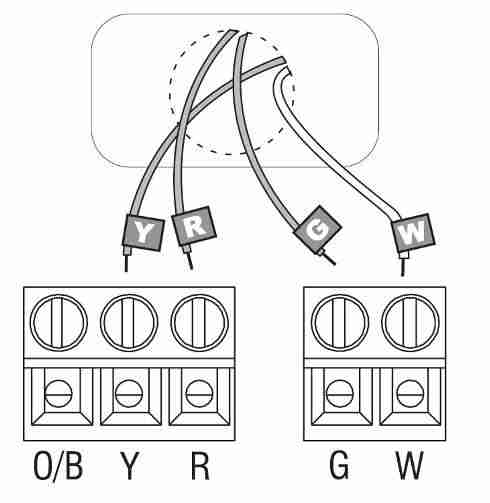Installing Honeywell Programmable Thermostat Two Wires

When it comes to controlling this thermostat’s features, you have the touch. You can use your Wi-Fi-enabled device (smartphone, tablet, computer), the free app on your smartphone/tablet or the thermostat’s touch screen. Every touch is convenient, with the goal being your comfort. Features such as Auto Alerts and Smart Response are intuitive and indispensable for keeping your system running and your home comfortable. • Seven-day programming • Energy saving mode • Large, easy-to-read display • Real time clock (optional) • Automatic software updates • Secure network • Permanent/temporary hold • Precision accuracy to +/-1 degree F • Auto change from heating to cooling • One-year limited warranty • DIY installation • Total Connect Comfort voice command. Often, the thermostat will separate from the wallplate with moderate pressure.
How to install a Honeywell thermostat with only 2 wires available. Jan 05, 2015 Honeywell Thermostat Installation and Wiring. Honeywell programmable thermostat 2 WIRE INSTALL!!! Honeywell Thermostat Wiring - Wire Programmable.
Other times, there might be small screws holding the device in place. If you are unable to pull it off, please refer to your thermostat manufacturer's website or manual for removal instructions.
NOTE: Do not place your old thermostat in the trash if it contains mercury in a sealed tube. Contact the Thermostat Recycling Corporation at or 1-800-238-8192 for information on how and where to properly and safely dispose of your old thermostat. The C wire is another name for the Common wire.
There is no universal color used to designate this type of wire. It is simply a wire that originates from your heating/cooling system and needs to be connected to the C terminal on your Lyric, Wi-Fi or connected thermostat. The purpose of the C wire is to provide constant 24-volt power to the thermostat. Not all thermostats need a C wire, although use of Apple HomeKit with your thermostat and most Wi-Fi enabled thermostats do require one. The is the one exception to the Wi-Fi, smart, connected thermostat rule, as it does not require a C wire. It can still function by drawing power from your heating and cooling systems to power its battery.
This method is also referred to as Phantom Power or Power Stealing. Honeywell also offers a wide variety of non-connected thermostats that do not require a C wire to operate. If a C wire is required for your thermostat install, please read: For more information on the C wire topic, please watch this instructional video. Your old thermostat model may not have required a wire connected to a C terminal. Best File Explorer For Ipad. Honeywell offers many great that do not require the need for a C wire to power the device.
Most of these thermostats are powered by basic AAA or AA batteries. The C wire or Common wire is necessary to provide 24-volt power to your Honeywell Wi-Fi or connected thermostat (exception is the ) and for use with Apple HomeKit.
If this wire is not plugged into the C terminal, and you want to know if you have one or not, be sure to check if there is an extra wire that is pushed into the wall or wrapped around the wire bundle coming from the wall. Gently pull on the wire bundle to check whether there are any additional wires. Bleach Mugen Life Bars Install. If you do find an extra wire, you can try connecting it to your thermostat's C terminal, but you must also ensure that the same wire is connected at the furnace's terminal panel.
Please review our page for pictures and step by step instruction to confirm that your system meets compatibility requirements. If you do not have a C wire and need one to power your Wi-Fi or connected thermostat, there are several options like using a Honeywell Wire Saver Module, a thermostat that uses phantom power or the G wire solution. Please view, for additional information. For directions and alternative wiring options, please refer to this instructional video.